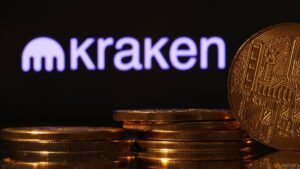Anchorage Custody Shifts Away from USDC: What It Means for Crypto Investors

Anchorage Digital Discontinues Support for USDC Stablecoin
Anchorage Digital’s Decision Sparks Controversy
Cryptocurrency custodian Anchorage Digital has announced it will cease support for the widely-used USDC stablecoin. This decision has drawn significant backlash from Circle, the issuer of USDC, as well as other stakeholders within the cryptocurrency community.
Reasons Behind the Withdrawal
The move comes on the heels of Anchorage’s recent publication of its “Stablecoin Safety Matrix,” which evaluates stablecoins based on their regulatory compliance and management of reserve assets. Alongside USDC, Anchorage is also discontinuing support for Agora USD (AUSD) and Usual USD (USD0).
Rachel Anderika, Anchorage’s head of global operations, explained that the stablecoins in question no longer meet the company’s internal standards for long-term viability. She highlighted concerns regarding concentration risks linked to their issuer structures, urging institutions to carefully assess these factors.
Emphasis on Transparency and Security
Anderika further emphasized Anchorage’s commitment to supporting stablecoins that exhibit strong transparency, independence, security, and alignment with future regulatory frameworks.
In its report, Anchorage criticized USDC for lacking substantial prudential oversight, noting that approximately 15% of Circle’s reserves are held in cash at banks. This assessment has faced pushback from industry experts, with some labeling it as an unfair critique.
Industry Response and Compliance Defense
Viktor Bunin, a protocol specialist at Coinbase, which co-launched USDC with Circle, expressed his discontent, describing Anchorage’s findings as poorly executed and biased. In response, Circle defended its compliance record, asserting adherence to U.S. regulatory standards and highlighting its pioneering role in achieving compliance with the European Union’s new crypto regulations.
The Broader Context of Stablecoins
This development occurs at a pivotal moment for stablecoins, as noted in a recent report by the Bank of International Settlements (BIS), which questioned their effectiveness as a monetary form. The report pointed out that while stablecoins have transitioned from niche tools to serious considerations for traditional financial institutions, they still struggle with fundamental issues of stability, trust, and utility.
The BIS’s critiques resonate with the ongoing discussions among major financial players like Mastercard and Visa, who are exploring the potential of stablecoins. The report suggests that for stablecoins to function effectively as a form of currency rather than speculative assets, they must navigate significant infrastructural, compliance, and economic challenges, a process that could take years.
Conclusion: The Future of Stablecoins
Despite the hurdles, the increasing focus on stablecoins from established financial entities indicates a growing recognition of their potential. As the landscape evolves, the groundwork is being laid for stablecoins to transition into a more stable and accepted form of money, provided they can address the underlying challenges they currently face.







